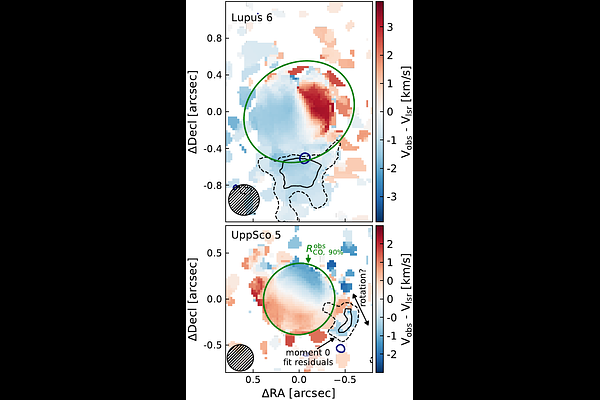The ALMA Survey of Gas Evolution of PROtoplanetary Disks (AGE-PRO): XI. Beam-corrected gas disk sizes from fitting 12CO moment zero maps

The ALMA Survey of Gas Evolution of PROtoplanetary Disks (AGE-PRO): XI. Beam-corrected gas disk sizes from fitting 12CO moment zero maps
Leon Trapman, Miguel Vioque, Nicolás T. Kurtovic, Ke Zhang, Giovanni P. Rosotti, Paola Pinilla, John Carpenter, Lucas A. Cieza, Ilaria Pascucci, Rossella Anania, Carolina Agurto-Gangas, Dingshan Deng, James Miley, Laura M. Pérez, Anibal Sierra, Benoît Tabone, Dary A. Ruíz-Rodríguez, Camilo González-Ruilova, Estephani TorresVillanueva
AbstractThe inward drift of mm-cm sized pebbles in protoplanetary disks has become an important part of our current theories of planet formation and, more recently, planet composition as well. The gas-to-dust size ratio of protoplanetary disks can provide an important constraint on how pebbles have drifted inward provided that observational effects, especially resolution, can be accounted for. Here we present a method for fitting beam-convolved models to integrated intensity maps of line emission using the astropy python package and use it to fit 12 CO moment zero maps of ten Lupus and ten Upper Scorpius protoplanetary disks from the AGE-PRO ALMA Large Program, a sample of disks around M3-K6 stars that cover the ~1 to 6 Myr of gas disk evolution. From the unconvolved best fit models we measure the gas disk size (RCO,90%[model]), which we combine with the dust disk size (Rdust,90%[FRANK]) from continuum visibility fits from Vioque et al. (2025, in press.) to compute beam-corrected gas-to-dust size ratios. In our sample we find gas-to-dust size ratios between ~1 and ~5.5, with a median value of 2.78(+0.37,-0.32). Contrary to models of dust evolution that predict an increasing size ratio with time, we find that the younger disks in Lupus have similar (or even larger) median ratios (3.02(+0.33,-0.33)) than the older disks in Upper Sco (2.46(+0.53,-0.38)). A possible explanation to this discrepancy is that pebble drift is halted in dust traps combined with truncation of the gas disk by external photo-evaporation in Upper Sco, although survivorship bias could also play a role.